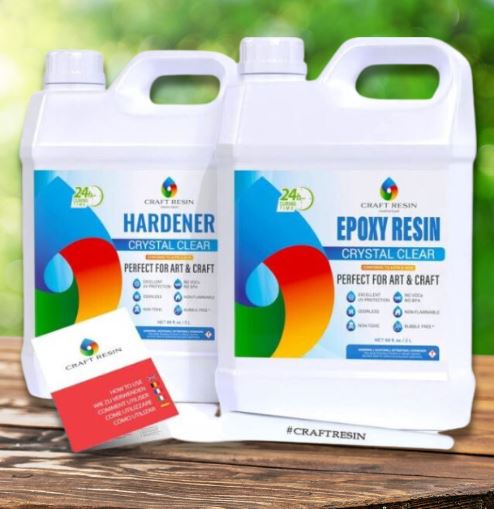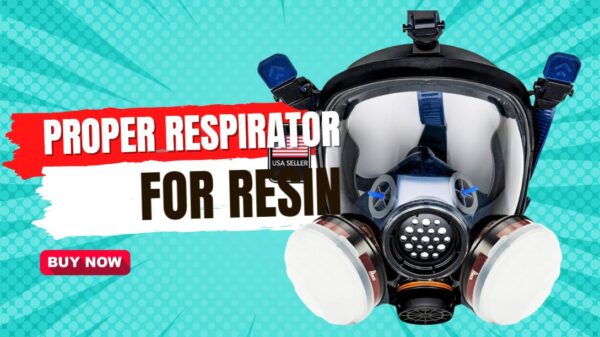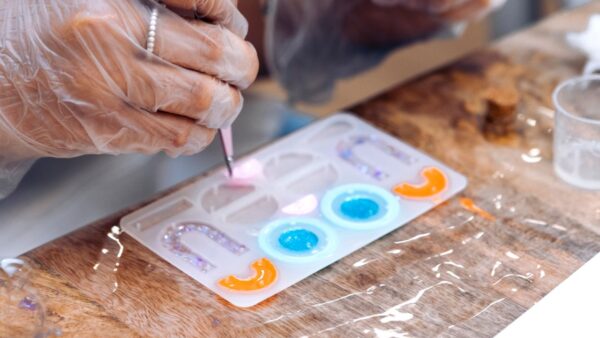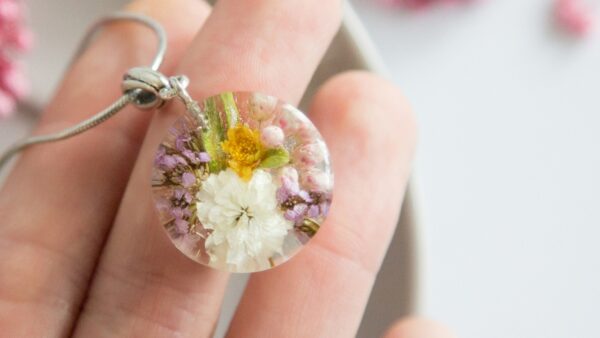7 best Resins For Insects & bugs [2025]
Welcome to our guide on the best resins for preserving bugs and insects. Today you will learn what to look for when you need resin to cover insects with resin.
This article is for an entomologist, a collector, insect jewelry maker, or simply someone with a fascination for the world of bugs. We will show you the best resin to use and pro tips for pouring resin over bugs and insects.

In this list, we’ll explore various resins, considering their qualities, durability, clarity, and ease of use, to help you make an informed decision for your bug preservation projects.
Our recommendations will assist you in achieving excellent results in the captivating art of insect preservation.
And then you can go ahead and make your resin DIY jewelry, crafting projects and specimen displays. Let’s go through this list together. Are you ready to see the top resin for insects? Let’s go through this list.
Best Resin For Bugs & Insects
1. Let’s Resin
Let’s Resin excels at preserving insects like butterflies due to its high-quality, crystal-clear resin that has exceptional clarity, allowing the intricate details of these delicate specimens to shine through.

Its low odor and minimal bubbles provides a quality resin for preserving insects without compromising their natural beauty. This is a brand that we have on hand here and it works fantastic for crystal clear resin pours.
The easy-to-use nature of the product simplifies the preservation process for epoxy bugs. This is a good choice of resin for insects for both beginners and experienced resin users.
2. Craft Resin
Craft Resin is a top selling brand within the world of resin makers and is great for preserving bugs and insects.
Known for its crystal clear formula, it is an exceptional choice for entomological and insect preservation projects. So this makes it one of the best resin for casting insects.

Its clarity renders it an ideal medium for encapsulating and safeguarding even the most intricate details of your preserved specimens, ensuring that every tiny nuance remains vivid and unaltered.
This resin brand has a low odor and minimal volatile organic compounds (VOCs), creating a pleasant for bug preservation sessions.
The user-friendly mixing ratio and self-leveling properties simplify the resin application process, gives an even, smooth coating and minimizing the need for extensive touch-ups during the delicate process of preserving bugs and insects.
3. ArtResin
ArtResin shines as a top choice for crafters wanting a top selling resin for bugs. It has high clarity, low odor, and low VOC content.
With its self-leveling properties, ArtResin streamlines the resin application process, making it a go-to option for creating stunning jewelry and exquisite resin coasters with bugs inside.

One of its standout features is the UV resistance, a shield against yellowing and degradation. But ArtResin doesn’t stop at quality alone.
It also offers a robust commitment to durability, backed by a thriving online community and an abundance of valuable resources.
We have the full ArtResin Review to learn more about this brand.
4. Beast Bond Epoxy
Crystal clear resin, like this brand is an indispensable asset for preserving bugs and insects. It allows you to capture these delicate specimens in a visually stunning and lifelike manner. This is a top choice for preserving bugs in resin and has excellent feedback.

The transparent nature of this resin makes so that every intricate detail, from the iridescent wings to the delicate antennae, is properly showcased, creating a captivating and enduring display.
Moreover, it provides protection against decay and damage, ensuring the longevity of these fascinating specimens while allowing for easy examination and appreciation.
5. Hippie Crafter Resin
Hippie Crafter Resin goes beyond being a resin supplier; it serves as your all-in-one destination for all things artistic and craft-related.
Their thoughtfully curated collection of premium resins, pigments, molds, and art supplies simplifies the shopping experience for crafters. They offer everything required for working with resin.

With their extensive range of crafting materials, you can easily get the right resin needed, plus things like paints for resin to expertly showcase and protect your delicate insect specimens.
6. Superclear Resin
Using a quality resin for preserving bugs is very important. This shop has excellent feedback for their resin. What’s really great about this type is that it mixes at 1:1 ratio so it’s good for beginners.

The resin’s ability to provide exceptional clarity, minimal bubbles, and low odor, will give you a successful preservation process without compromising the insects’ natural beauty.
This resin by Superclear not only enhances the aesthetics of the preserved bugs but also contributes to the longevity and overall quality of the display. They have a formula that helps slow down the resin from turning yellow over time.
7. Promise Epoxy
Promise Epoxy is an excellent choice for preserving bugs, offering fantastic clarity and minimal odor for insect preservation in crystal clear resin.
Their store features a variety of colorants and additional supplies, making it a convenient one-stop-shop for bug collectors looking to cover their insects with resin.

With a reputation for top-notch resin and a comprehensive range of products, this resin a go-to shop for those seeking to beautifully preserve insects while enjoying a versatile array of crafting resources.
Tips For Pouring Resin Over Bugs
Select the Right Resin:
Choose a high-quality, clear casting resin suitable for entomological projects like our suggestions above.
Epoxy resins are often the preferred choice due to their clarity and durability. Make sure that the resin is specifically designed for embedding or casting like the brands above.

Prepare Your Specimen:
Carefully clean and prepare the insect specimen by pinning or positioning it in the desired pose.
The insect must be completely dry and free of any moisture, as moisture can cause bubbles and mold in the resin. We can’t stress enough that the specimen must be totally free of moisture.

Use a Vacuum Chamber:
To minimize the risk of air bubbles in the resin, consider using a vacuum chamber. This step can greatly enhance the clarity of your preserved bug specimen.

Layered Pouring:
When pouring the resin, consider doing it in layers. Pour a thin layer first, allow it to partially cure, and then add the insect in the desired position. This reduces the risk of bubbles and helps secure the insect in place.
Avoid Direct Sunlight and Heat:
Once your insect specimen is encased in resin, be mindful of its long-term storage and display.
Avoid exposing the resin-encased insect to direct sunlight or excessive heat, as this is one of the major causes why the resin will yellow or become brittle over time.
Display your preserved bugs in a location with controlled lighting and temperature to help their longevity and vibrancy over time.
Never Kill A Bug Or Butterfly:
Killing bugs for creating resin pieces is ethically questionable and unnecessary for several reasons. First and foremost, it raises ethical concerns about the treatment of living creatures and is inhumane.
There are alternative methods to source insect specimens, such as using naturally deceased or ethically sourced specimens, which respect the insects’ lives and their place in the ecosystem.
Try getting bugs from a local sanctuary where the bug has expired naturally. Or if possible, take a walk through your yard or local park.

Many insects play vital roles in pollination, decomposition, and food chains, and their loss can have negative consequences on the environment. Besides, it’s just plain mean. Just don’t do it.
Insect preservation can be done responsibly and ethically without causing harm to living creatures. By choosing these ethical methods, you can create resin pieces while respecting the principles of compassion and environmental stewardship.
Preserving Bugs In Resin: FAQ
Why do people want to preserve insects in Resin?
People seek to preserve insects for various reasons. They may be driven by their scientific, educational, and artistic value. Insect preservation plays a pivotal role in scientific research and biodiversity studies, helping scientists understand ecosystems and the relationships between species.
Additionally, preserved insects serve as valuable educational tools, aiding in the study of entomology and the dissemination of knowledge about the natural world.
For artists and collectors, insects offer intricate and captivating subjects for displays and artwork. That’s why butterfly resin jewelry is so popular.
Whether for scientific inquiry, education, or artistic inspiration, the preservation of insects allows individuals to connect with the world of insects.
How do I prepare insects for resin casting?
Properly clean and prepare the specimen by pinning or positioning it in the desired pose. Make sure the insect is thoroughly dry, as any moisture can lead to bubbles in the resin.
How do I prevent air bubbles in the resin?
Using a vacuum chamber to degas the resin mixture before pouring it can help eliminate air bubbles. Pouring the resin in thin layers and working in a clean, dust-free environment also helps reduce the risk of bubbles.
See our guide on bubble removal in resin.
What’s the best way to position the insect in the resin?
You can experiment with various positions, but most insects look best when they are posed naturally or in a lifelike stance. Be patient and take your time to get the positioning right.
How long does it take for the resin to cure fully?
The curing time varies depending on the specific resin used. Follow the manufacturer’s instructions for curing times and conditions. It can range from a few hours to several days. Check out our article about common resin cure times.
What are some common mistakes to avoid when preserving bugs in resin?
Common mistakes include not thoroughly drying the specimen, using the wrong type of resin, overpouring, and neglecting to remove air bubbles.
Can I preserve delicate insects like butterflies and moths in resin?
Yes, you can preserve delicate insects, but it requires extra care. The insect must be completely dry to prevent molding over time. Consider reinforcing fragile parts with a tiny amount of UV resin before encasing in resin.
Can I use UV Resin For Bugs & Insects?
While UV resin can cure quickly and is suitable for certain crafting projects, it lacks the depth required to pour properly onto the specimen if your insect is larger.
That does not mean you can never use UV resin, because it does have a use for top coating or for making really small jewelry pieces where you do not need a deep pour.

You can also use UV resin for securing your insect before pouring the epoxy resin. These methods take practice so that you can’t tell where the UV resin ends and the epoxy resin begins.
Keep in mind that UV resin may not offer the same durability and UV resistance. So your bug might start to turn yellow over the years. Therefore, for preserving bugs, epoxy resins are generally the preferred choice over UV resin.
In Closing: We hope this guide has been valuable in your quest to preserve bugs and insects with the utmost care and precision.
Selecting the right resin is a first step in for helping your cherished specimens maintain their beauty and integrity for years to come.

Whether you’re embarking on a new entomological project or refining your preservation techniques, we trust that our recommendations have provided you with the insights you need.
Thank you for taking the time to explore the world of insect preservation with us. If you have any further questions or need more guidance, don’t hesitate to reach out. Happy preserving, and thanks for reading!

Next, learn all about Lac Resin that’s made from insects.





![9 Best Resins For Stabilizing Wood [2025]](https://craftydiyartistry.com/wp-content/uploads/2023/11/resin-for-wood-stabilizing-1b-600x499.jpg)
